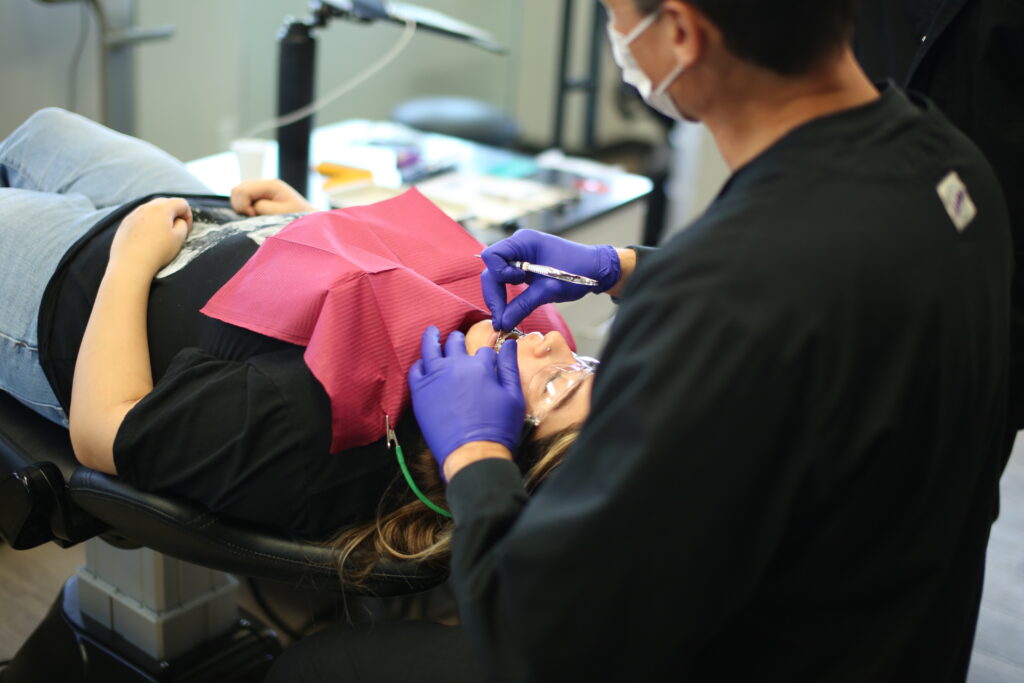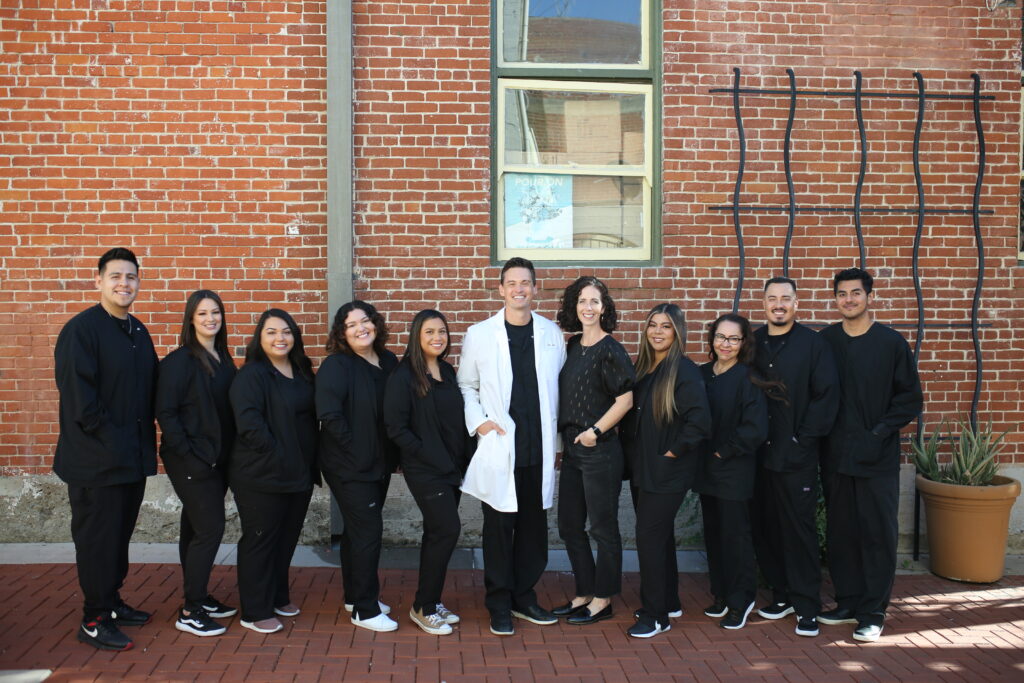At Dr. Jared Lee Orthodontics, we believe understanding the different parts of braces and what they do can help you better care for your appliance and know what to do in case of complications. Your appliance is a complicated structure that takes many years to master. But for the sake of simplicity, our team has broken down the essentials of what you need to know to begin your treatment confidently!
Orthodontics 101: Braces Explained
Braces are advanced orthodontic appliances placed directly on the teeth to correct and align the teeth and jaw. Each specialized component works together to put pressure on your teeth and can help you achieve the beautiful smile you are after. It can treat many dental complications, including bite issues, crowded or gapped teeth, and malocclusion.
While the appearance of your smile is an apparent benefit to enjoy, thanks to the realignment process, there are many more to benefit your general health. Everything from smoother digestion and decreased risk of jaw and TMD issues to a boost in self-esteem awaits you at the end of treatment.
Treatments Available
Clear braces are popular among teens and adults due to their nearly invisible appearance. Their discreet appearance is able to blend in with your teeth so as not to change up your daily look too much while still allowing you to reach your teeth alignment goals.
Metal braces are a tried and true option known for being able to fix even the most complex of orthodontic issues. No longer the bulky appliance it used to be years ago, it is a small and affordable tool you can rely on in your smile journey.
A Closer Look At Each Component
Brackets
Affixed to your teeth are brackets, small square-shaped attachments that act as anchor points for many other parts. They are smaller than ever now and no longer stick out on your teeth as visibly. Each placement point is customized to your specific needs so that Dr. Lee can control the direction of each tooth.
Our two braces treatment options use different brackets. Metal braces use a bracket made of high-grade stainless steel and are smaller, sleeker, and more effective than ever. Clear braces use an attractive translucent ceramic material to add to the aesthetic look, though they are slightly more fragile than their counterpart.
Archwire
The archwire is a long, thin wire weaved into each bracket across your teeth and is used to place measured pressure on your teeth and gums throughout treatment to shift everything in the right direction. Dr. Lee will slowly adjust it during each appointment as necessary to help configure your alignment. Depending on what your unique care plan calls for, the thickness of the archwire will vary to meet your smile needs.
Glue
Holding brackets in place, a special glue known as bonding cement is used to place them directly on your teeth. It keeps them steady for however long you are in treatment. Whether it is for three months or three years, rest assured the glue is easily removable when the time comes using special tools we have in our office.
Elastics
If Dr. Lee comes across a particularly stubborn tooth that isn’t quite moving along with the rest, he will use elastics, also referred to as rubber bands. They are often used with bite complications. Elastics are attached to your upper and lower bracket’s hooks to apply additional pressure in the right direction. They are offered in various sizes and strengths to prevent pushing a tooth further than it needs to go.
Metal Bands
To give braces more stability during treatment, metal bands may be placed on your back molars to keep the archwire and other components in place. This metal piece is custom-made to fit over your back molars as comfortably as possible. While bands are not always necessary, Dr. Lee may find your specific case could benefit from the extra part.

Components Used In Two-Phase Treatment
Some children require earlier treatment than others. Braces are not yet an option with baby teeth still present, so we look to other tools to help us set your child’s teeth up for success once their permanent teeth begin growing. In this case, space maintainers and palatal expanders are used.
Palatal Expander
A palatal expander is a metal device with two pieces attached to your back molars to expand your jaw slowly. We provide a small key to push them further apart daily while your child’s bones are still malleable. Relying on an expander at a young age helps to prevent more complicated procedures that complete the same work later in life.
Spacers
When molars crowd up in one area of your mouth, Dr. Lee will use spacers to separate your teeth painlessly. This small donut-shaped ring is typically set between a crowded area of teeth to create space for metal bands to be placed comfortably.
Maintaining Your Progress After Treatment
Dr. Jared Lee Orthodontics provides each of our patients with a retainer to maintain your perfect smile results. They come as either fixed or removable appliances.
The former is a short wire glued flush to your upper and lower front teeth. You don’t have to worry about remembering to keep them in, but taking the extra time to floss and brush the wires properly ensures they stay in top condition.
Removable retainers are made of long, rounded wire spanning your teeth attached to a plastic tray. They are typically worn full-time for six months after the end of treatment, then only nightly after that. It is important to remember when to keep them in so as not to let your teeth rebound, though there is no harm in wearing your retainer for too long.

Straighten Your Smile With The Power Of Braces
As you begin or consider braces treatment, remember Dr. Jared Lee Orthodontics is here to help you navigate your smile journey. We proudly serve Oxnard, Santa Paula, and the surrounding communities! Take the next step by scheduling a free consultation with our office to learn which appliance fits your needs. We can’t wait to meet you!
